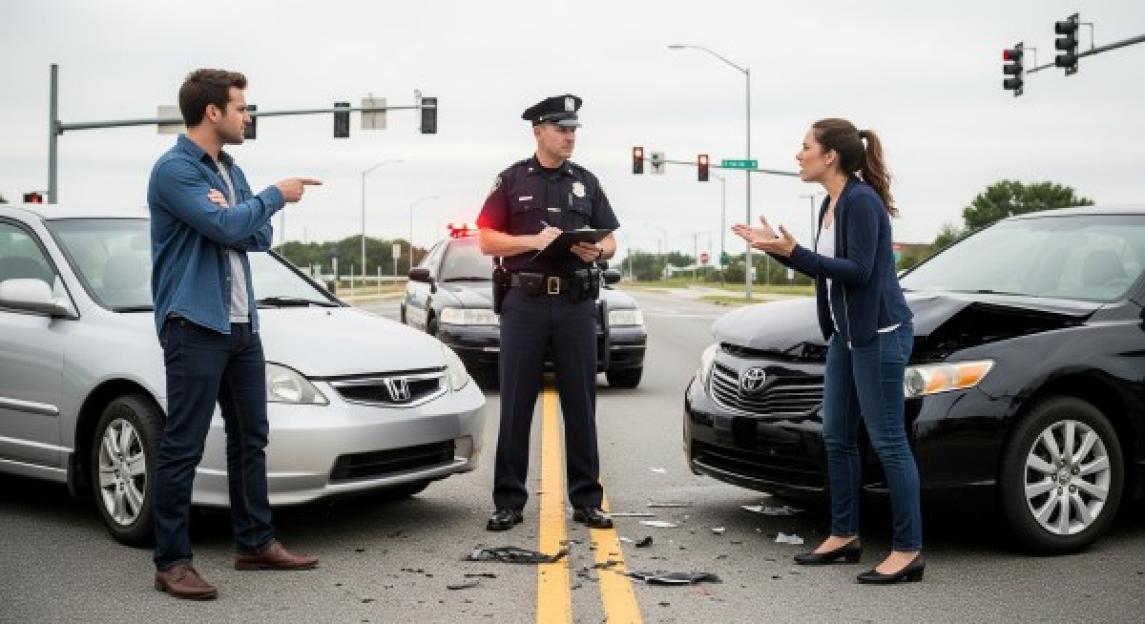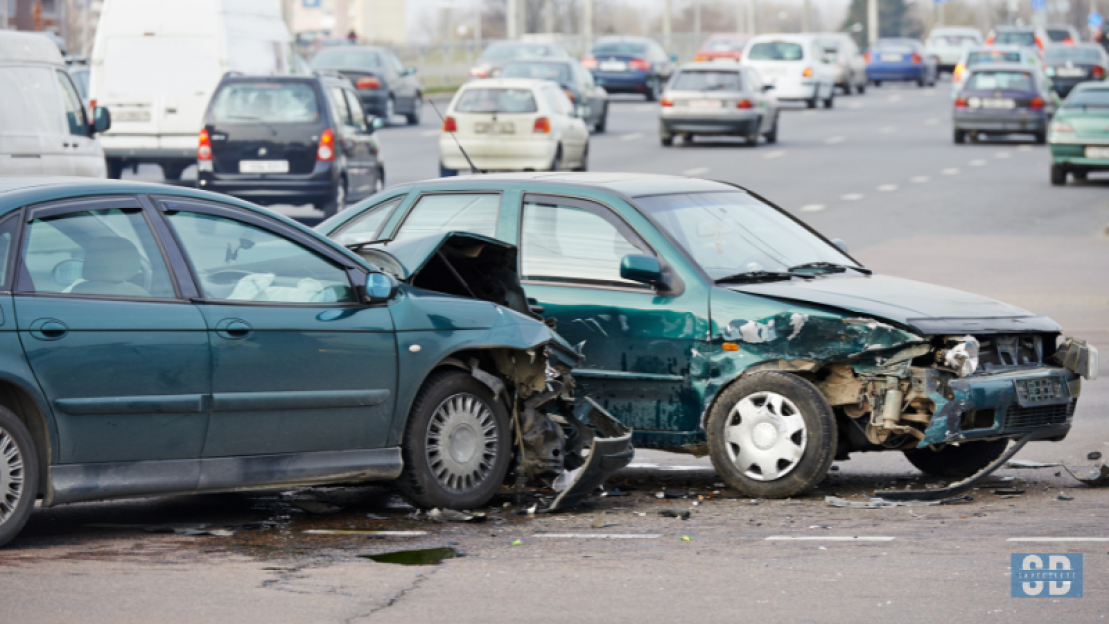After a car accident, many people are left confused about what happens next. They could be dealing with damage, injury, stress, and paperwork all at once. Then comes the insurance company, which will try to minimize its payout using various tactics. Most drivers don’t understand how insurance companies decide who is responsible.
It can feel like decisions are made behind closed doors, and the outcomes do not always seem fair. It is essential to comprehend the system and the factors that influence the outcome, enabling you to make informed decisions about your case.
Understanding Fault in Car Accidents
Fault is a word that comes up quickly after an auto accident. Who caused the accident? Who will pay for the damage? Insurance companies focus on this question because their decisions rely on the answer. The person found at fault is often the one whose insurance pays for most, or sometimes all, of the costs that follow. This means determining fault is a critical part of the process.
Determining fault means figuring out who acted in a way that led to the accident. It does not always come down to one person. Sometimes, more than one driver is responsible. One may have run a red light, while the other may have been speeding. That is why the process is not always simple. It requires a careful look at what happened, who was involved, and what led up to the crash.
Why Fault Matters in Injury Claims
Fault is not only important in covering damage to the vehicle, but it also plays a central role in cases involving injuries. After an accident, medical bills begin to pile up. A person may miss work, need surgery, or face a long recovery. These are not small costs, and figuring out who is responsible becomes even more serious.
In many states, the driver who is at fault will be held liable for paying the other person’s medical bills, along with related losses such as lost wages or pain and suffering. This system puts a great deal of pressure on determining fault correctly.
In other states that follow a no-fault approach, each driver’s insurance covers their own injuries up to a point. Still, even in those cases, fault matters. Once injuries become serious enough, or medical expenses go beyond a certain amount, the burden may shift, and the other driver’s insurance can be brought into the picture, but only if fault can be established.
When a person is injured and fault has not been decided, the process becomes even more challenging. You may find yourself waiting for care or having to use your own insurance, even if the accident wasn’t your fault. This is why having a strong understanding of how fault works in auto accident claims can help protect your health and your finances.
How Insurance Adjusters Investigate Accidents
The question of who hit whom is important, and it’s often the starting point in any fault investigation—but insurance companies dig deeper to uncover the full story behind the crash. After a crash is reported to the insurance company, the claim is assigned to someone called an adjuster. This person becomes responsible for digging into the case. Their job is to figure out what happened, why it happened, and who caused it.
The first step is often talking to the drivers. They ask questions, take notes, and review each person’s account of the accident. If there were any passengers or witnesses, the adjuster may also contact them. Next, they review any police report that was made. These reports can include statements from both sides, comments from officers who responded, and sometimes a written opinion about who appeared to be at fault.
If there are photos of the scene, the adjuster studies them closely. They may look at where the cars ended up, how bad the damage was, and what the weather or road conditions were like. Videos, such as from nearby traffic cameras or dash cameras, are even more helpful. Some adjusters will go further and have the damaged vehicles inspected or ask experts to reconstruct how the accident happened based on the damage patterns.
It isn’t a quick job, and in some cases, it can take weeks. But once the adjuster feels they have enough facts, they will make a decision about fault. They will then explain that decision to the people involved. Sometimes, the person found at fault is surprised by the outcome.
Key Evidence Insurance Companies Rely On to Determine Fault
To understand how insurance companies reach a decision, it helps to look at what types of evidence they use. The words of the parties involved are just a starting point. Most of the time, additional evidence is needed to support or question those statements.
Police reports are one of the more common tools. These are written by officers who arrive at the scene. While these reports are not final proof, they can be useful. Officers may include diagrams showing how the vehicles were positioned, mention any tickets that were given out, and sometimes even suggest who was likely at fault.
Photographs of the scene can also play a big part. These help show where the accident happened, what the damage looked like, and what the surrounding area was like. A skid mark on the road, for example, might show a driver tried to stop but couldn’t in time. Debris, broken glass, or tire tracks can also add to the picture.
Video footage is becoming more common as well. Dash cameras, security cameras on buildings, and public traffic cameras can all show what happened in a way that words cannot. Video often clears up confusion and helps an adjuster understand the timing, speed, or behavior of a driver.
When there is uncertainty, the insurance company may call in specialists. Accident reconstruction experts use technology to help figure out how the crash likely occurred. Their input can be especially helpful in crashes involving severe injuries or unusual vehicle movements.
Types of Negligence Systems Used to Determine Fault
When more than one person plays a part in causing a car accident, figuring out who is responsible becomes more complicated. Each state handles this issue in its own way. These differences are not minor. They shape how claims are reviewed, who gets compensated, and whether a driver can recover any money at all. The system used in your state could change the result of your case completely, which is why it’s important to understand how it works.
Negligence is the legal concept that guides these decisions. It means someone did not act with proper care, and that lack of care led to harm. But what happens when two people make mistakes? Or when one person is mostly at fault, and the other only slightly? States answer those questions in three main ways. Each system takes its own approach to dividing responsibility and deciding if compensation is allowed.
Some states follow a rule called pure comparative negligence. This system does not shut out someone just because they share some of the fault. Instead, it looks at the full picture and breaks the fault down into percentages.
If one driver is found to be 70% responsible and the other 30%, those numbers matter. The person who was more at fault still has the right to recover a portion of their losses. Their compensation will simply be reduced by the percentage of fault assigned to them.
Another approach is called modified comparative negligence. Many states use some version of this rule. Like the pure system, it starts by dividing the fault between the people involved. The difference is that this model sets a limit. If a driver’s share of the blame goes over a certain number, usually 50-51%, they lose the right to recover damages.
The final and strictest rule is called contributory negligence. Only a few states still use it, but where it applies, it can feel a bit harsh. Under this system, if a person is found to be even 1% responsible, they are not allowed to recover anything. It does not matter how minor the mistake was.
A small oversight, such as forgetting to use a turn signal or slightly speeding, can completely block a claim. This system offers no room for error and often leads to outcomes that feel unfair to people who were only slightly at fault.
These negligence systems impact how insurance companies handle claims. Adjusters must apply these legal rules when reviewing evidence and assigning fault. In a state that uses pure comparative negligence, adjusters focus on assigning accurate percentages. Every point affects what a person might receive.
A slight difference in fault attribution can mean hundreds or even thousands of dollars in the claim. In a contributory negligence state, the stakes are even higher. A small detail in a police report or one wrong statement could lead to a complete denial of the claim.
The system used in your state matters from the moment a crash happens. It affects how the insurance company views your role in the accident and what type of compensation might be available. These rules are not always easy to understand, and they are not always applied fairly.
If you were involved in a crash and believe fault is being assigned incorrectly, it’s time to get legal guidance. A lawyer can help you make sense of your state’s laws, examine the facts of your case, and fight for the outcome you deserve. Whether your state gives you room for recovery or sets a hard line, knowing the rules can protect you from making costly mistakes.
Common Fault Determination Scenarios in Car Accidents
Insurance companies deal with thousands of accidents every day. Over time, they have seen patterns repeat. While every accident is unique, certain types of crashes tend to raise similar fault questions.
Rear-end collisions are one of the most common. In these cases, the driver who hits the back of another vehicle is usually held responsible. Drivers are expected to keep a safe distance and stop in time, even if the car in front brakes suddenly. However, the driver in the front can also be responsible. For example, if the driver in front suddenly reverses without warning or has malfunctioning brake lights that give no signal of a stop, they may share some of the fault.
Left-turn crashes also come up often. If a driver tries to turn left across traffic and hits an oncoming vehicle, they are usually found at fault. The law says drivers making left turns must wait until it is completely safe to cross.
Lane change accidents also result in many claims. When a driver moves into another lane without checking carefully or using a signal, they can be held responsible. However, if both cars drift at the same time or one driver is speeding, fault may be split.
Parking lot accidents are harder to assess. There are often no traffic signals or clear right-of-way rules. Insurance companies have to look closely at the movement of each car, whether one was backing out, and who had a clearer line of sight. Various scenarios can happen in auto accidents, and each case needs careful assessment.
Can Being At Fault Increase Insurance Premiums
If you’re found at fault for an accident, you may end up paying more for insurance in the future. That increase can come at the time of renewal or even sooner. Insurance companies view drivers with a recent accident as a higher risk. That risk gets reflected in higher rates.
How much your premium rises will depend on a number of factors. These include the cost of the accident, whether anyone was hurt, and your previous driving record. If this is your first accident in many years, the increase might be small. If you have a history of claims or tickets, the impact might be larger.
Some companies offer programs that forgive one at-fault accident. These programs have rules, like how long you have been insured with the company or how clean your record has been. They are designed to give good drivers a second chance, but not everyone qualifies.
If you feel you were wrongly found at fault, it’s worth looking into an appeal. Otherwise, the effects on your premium can last for several years. Taking the time to understand how fault was decided and challenging errors can protect your budget going forward.

Disputing a Fault Decision with the Insurance Company
There are times when an insurance company gets it wrong. You may believe that the decision about fault doesn’t match the facts. If this happens, you have the right to challenge the outcome.
Start by asking the insurance company for a detailed explanation of how they reached their decision. You should also request copies of the key documents they used, such as police reports, witness statements, and photos. Review everything carefully and see if any important details were missed or misunderstood.
If you have evidence they did not consider, then you should write to the company again and provide those materials. It is not enough to just say the decision is wrong. You need to give clear reasons, backed by documents, photos, or witness accounts. In some situations, the company might reopen the investigation. In others, the decision may be upheld unless stronger action is taken.
When a dispute cannot be settled through regular communication, you may consider filing a complaint with your state’s Department of Insurance. This office can review whether the company followed the law and its own procedures. You can also ask to go through mediation or arbitration, depending on the terms of your insurance policy.
In complex cases where the amount in question is large or the impact on your life is serious, speak with a lawyer. A legal professional can help you prepare a proper challenge, write letters to the insurance company, or take the matter to court if necessary. Time limits apply in many states, so it is important not to wait too long.
How Legal Help Can Protect Your Rights
When you are involved in an accident, it may feel like the insurance company holds all the power. They collect the evidence, make decisions, and tell you what you can expect. But you have rights, and legal help can make sure those rights are respected.
A lawyer who understands accident law and insurance disputes can step in and review your case from the beginning. They know what to look for, how to read the documents, and what evidence matters most. If the insurance company’s decision seems unfair, your lawyer can challenge that finding.
Many people struggle to speak up for themselves when dealing with large insurance companies. You might feel uncertain, overwhelmed, or unsure about what the policy language means. A lawyer knows how to deal with these companies and isn’t afraid to ask tough questions or demand better answers.
Your legal team can also help you understand your coverage. They can explain the difference between what the company owes you and what it is offering. If your claim is denied or your payout seems too low, they can help you push for a better result.
When the process is confusing or the stakes are high, you do not have to go through it alone. A legal advocate stands with you to make sure your voice is heard and your case is handled fairly. That support can mean the difference between a disappointing outcome and the full protection you deserve.








